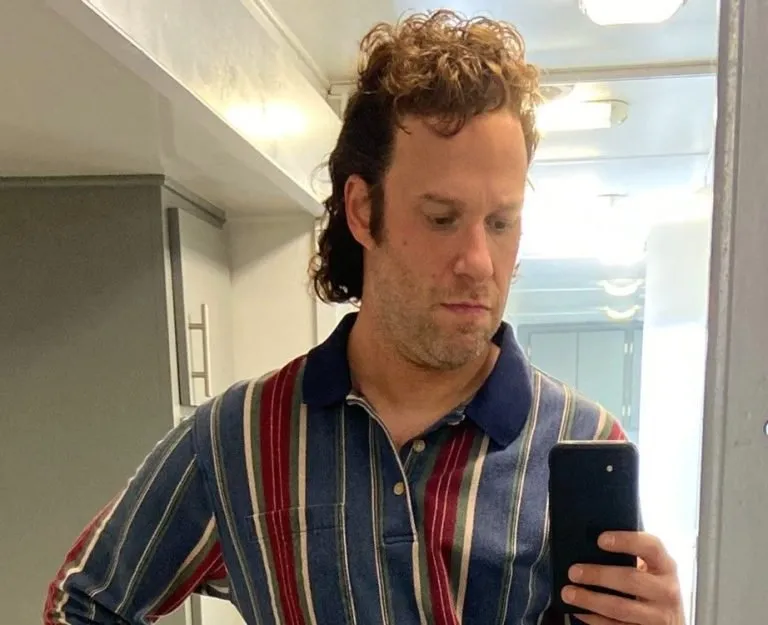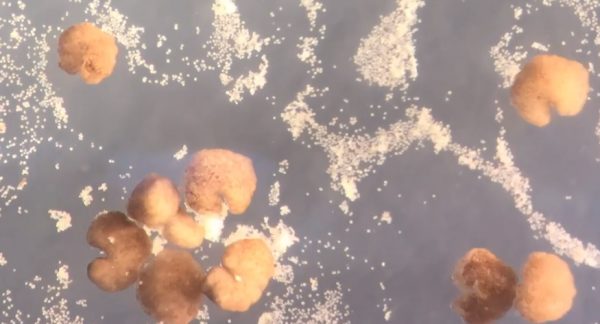Prepare to get your mind blown – multiple times. Apparently, “living robots” (also known as xenobots) are a thing. Even more unbelievable? Scientists say they can now reproduce.
Let’s break this down. First things first: though they bear the “bot” moniker, they’re not the kind of robots we tend to think of a la Wall-E.
“Most people think of robots as made of metals and ceramics but it’s not so much what a robot is made from but what it does, which is act on its own on behalf of people,” Josh Bongard, a computer science professor and robotics expert at the University of Vermont, told CNN.
Xenobots are tiny, sphere-shaped blobs made from around 3,000 cells that measure less than a millimeter (0.04 inches) wide. First revealed in 2020, experiments have since shown that they can move, cooperate with fellow xenobots, and heal themselves. But now the big brains at the University of Vermont, Tufts University, and Harvard University’s Wyss Institute for Biologically Inspired Engineering claim that these unusual little creatures can procreate – in a way never before known to mankind (or animal or plants, for that matter).
It’s called “kinetic replication” and, no, we can’t even begin to explain it – so we’ll just quote from the science nerds at CNN instead: “With the help of artificial intelligence, the researchers…tested billions of body shapes to make the xenobots more effective at this type of replication. The supercomputer came up with a C-shape that resembled Pac-Man, the 1980s video game. They found it was able to find tiny stem cells in a petri dish, gather hundreds of them inside its mouth, and a few days later the bundle of cells became new xenobots.”
We get the Pac-Man comparison, but what this actually means for real men like us, we don’t know – other than we’re just that much more terrified that we’re going to be replaced by bots, even if they don’t look like Optimus Prime.
Why scientists are trying to help these new organisms proliferate is beyond us. At the rate the world is changing, us old-fashioned humans will be obsolete soon enough – we don’t see why we should help speed up the process.
Cover Photo: YouTube
MORE NEWS:
Entertainment News 12 1 21
-
‘Pam and Tommy’ Trailer Featuring Sex Tape and Seth Rogen’s Mullet Drops (And It’s All as Hot and Trashy as You’d Hope)

Read more here.
Photo: Hulu
-
Elle Fanning Redefines Topless With Stylish Gold Boob Jewelry, Is There an Award For This?

Read more here.
Photo: Axelle/Bauer-Griffin / Contributor (Getty Images)
-
Mandatory Tweets: Kim Kardashian Rocking Yeezys While Holding Pete Davidson’s Hand Is Ultimate Eff You (In Her World)

Read more here.
Photo: Robert Kamau / Contributor and NBC / Contributor (Getty Images)
-
John Krasinski Reveals Scandalous Pam and Jim Plotline on ‘The Office’ That He Refused to Shoot, And We’d Kill to See

Read more here.
Photo: NBC
-
Jared Leto Rocks Pink Tuxedo For ‘House of Gucci’ Premiere, And We’re Fashionably Jealous

Read more here.
Photo: Emma McIntyre / Staff (Getty Images)
-
RANKED! The Best Mullets in TV and Movie History (Where Does Seth Rogen’s Mullet in ‘Pam and Tommy’ Trailer Fall?)

Read more here.
Photo: Instagram
-
Drake Reportedly Drops $1 Million at Strip Club Day After Astroworld Disaster, That’s One Way to Ease the Pain

Read more here.
Photo: Amy Sussman (Getty Images)
-
Ranked! The Funniest Celebrity Courtroom Sketches

Read more here.
Photo: Google
-
The Rock Admits to Regularly Peeing in Water Bottles, Finally Becomes Hero We’ve Been Waiting For

Read more here.
Photo: Axelle/Bauer-Griffin / Contributor (Getty Images)
-
Ranked! The Very Best Donald Trump Impressions on TV (Including James Austin Johnson’s Stunning New ‘SNL’ Impersonation)

Read more here.
Photo: NBC









